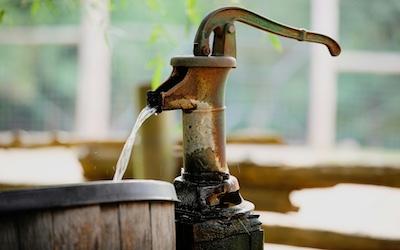Global Drivers of Local Water Stresses and Global Responses to Local Water Policies in the United States
The overuse of water resources, driven by agricultural needs, jeopardizes future water availability, as seen by the growing number of dry wells in the Western U.S. As agriculture increasingly relies on irrigation to adapt to climate change, appropriate water sustainability regulations are essential. We examine the teleconnections between the U.S. and global food systems, to estimate the spillover effects of groundwater restrictions in the U.S. on worldwide crop production and land use, as well as the implications of population and income changes for water resources in the US as manifested through agriculture markets. Within a quantitative global-to-local-to-global framework, we examine the spillover effects and global impacts of sustainable groundwater policy in the U.S. Additionally, we assess how changes in global population, income, and crop productivity can contribute to stress on local water resources in the U.S.
Our analysis shows that global market developments considerably contribute to sustainability challenges in the U.S., with growing commodity demand globally expected to account for more than half of these stresses by 2050. These findings highlight the complicated trade-offs between economic growth and sustainability, underlining the importance of a thorough review of local environmental policies. Productivity improvement in food industries can relieve pressure on water resources, while investment in research and development is required to accomplish these benefits. In addition, we illustrate how local water policies might unwittingly exacerbate global water stress, as measures to control irrigation water frequently result in cropping activity relocating elsewhere, both domestically and internationally. The proposed economic model, through its ability to analyze complex multi-scale interactions between economic activity, resource use, and environmental policies, provides a quantitative understanding of the trade-offs between growth and sustainability, and unintended consequences of local policies.
The rapid depletion of US groundwater resources and the rising number of dying wells in the Western US brings attention to the significance of groundwater governance and sustainability restrictions. However, such restrictions on groundwater withdrawals are likely to generate spillover effects causing further environmental stresses in other locations and adding to the complexity of sustainability challenges. The goal of this paper is to improve our understanding of the implications of growing global food demand for local sustainability stresses and the implications of local sustainability policies for local, regional, and global food production, land use, and prices. We employ SIMPLE-G-US (Simplified International Model of agricultural Prices, Land use, and the Environment—Gridded version for the United States) to disentangle the significance or remote changes in population and income for irrigation and water resources in the US. Then we examine the local-to-global impacts of potential US groundwater sustainability policies. We find that developments in international markets are significant, as more than half of US sustainability stresses by 2050 are caused by increased commodity demand from abroad. Furthermore, a US sustainable groundwater policy can cause overseas spillovers of US production, thereby potentially contributing to environmental stresses elsewhere, even as groundwater stress in the US is alleviated. These unintended consequences could include deforestation due to cropland expansion, as well as degradation in water quality due to intensification of production in non-targeted areas.

